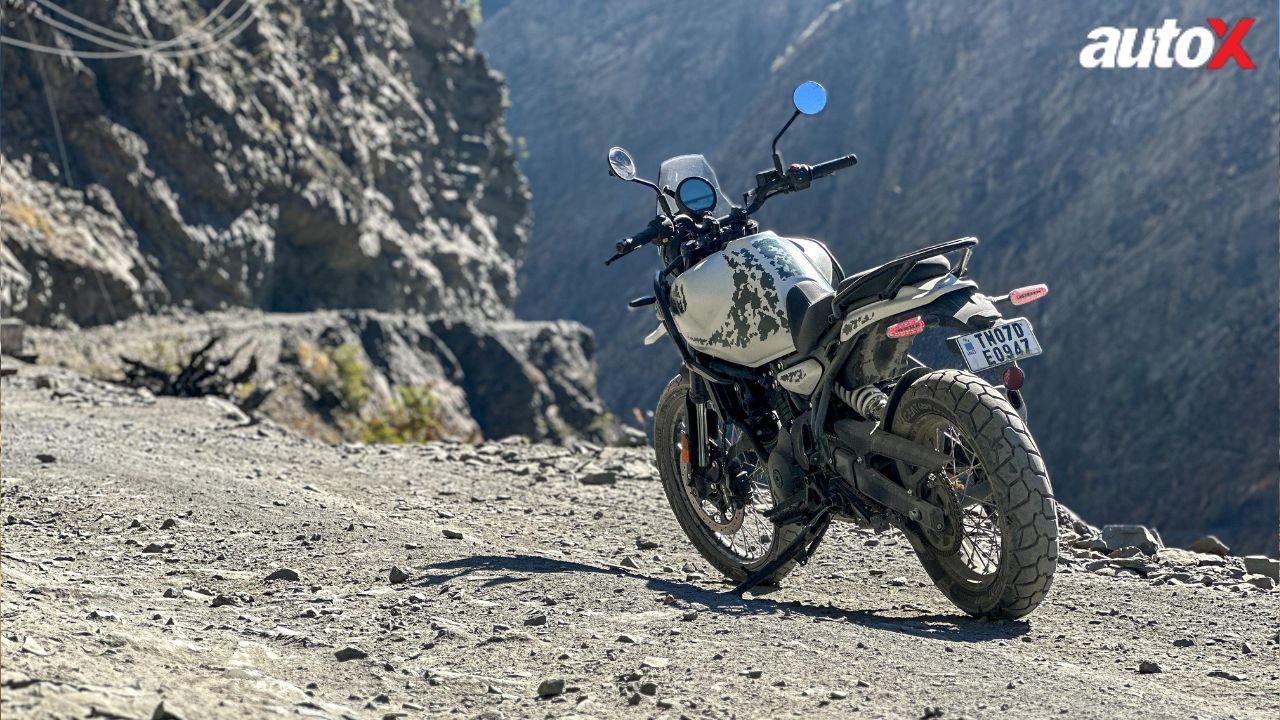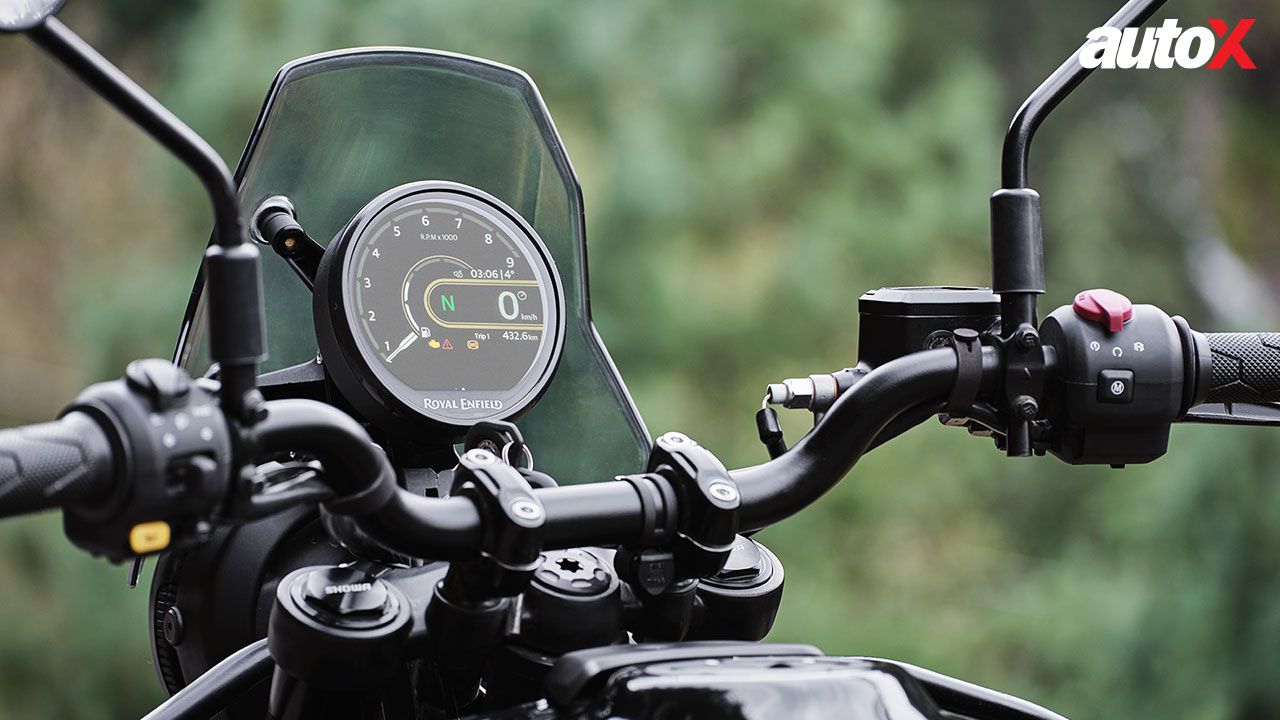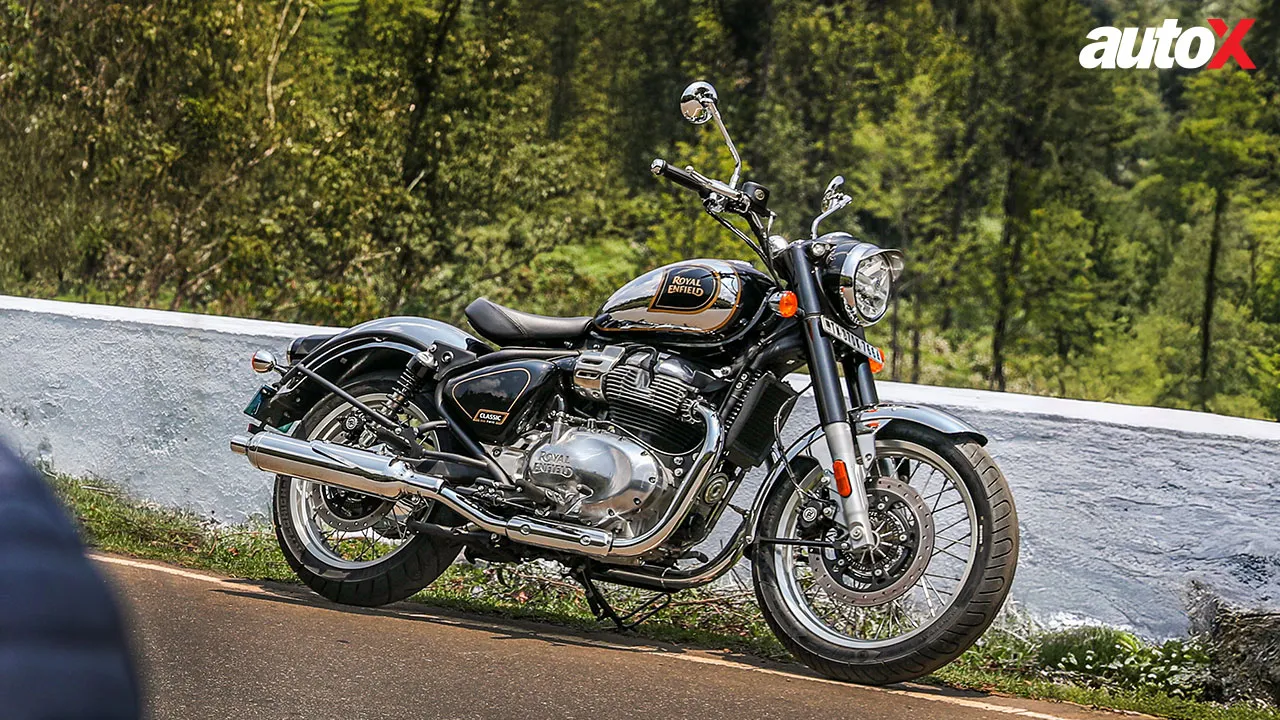Royal Enfield Guerrilla 450 vs Himalayan 450: What's Different?
The Royal Enfield Guerrilla 450 and the Himalayan 450 are mechanically related siblings with many design similarities, but there are quite a few differences between the two. Let's take a look at how the two bikes differ on paper:

Chennai-based manufacturer Royal Enfield just launched its new roadster in the Indian market – the Guerrilla 450. The Royal Enfield Guerrilla 450 is the second offering to use a liquid-cooled engine after the second-generation Himalayan 450, but it is more affordable at Rs 2.39 lakh (starting price, ex-showroom). Meanwhile, the Himalayan 450 ranges from Rs 2.85 lakh to Rs 2.98 lakh (ex-showroom).
The bookings for the Guerrilla 450 are underway in India, while deliveries will commence next month. The roadster can be had in three variants – Flash (Rs 2.54 lakh), Dash (Rs 2.49 lakh), and Analogue. The first two come with bold, enticing colours, while the base Analagoue looks rather staid. The Royal Enfield Guerrilla 450 and the Himalayan 450 are mechanically related siblings with many design similarities, but there are quite a few differences between the two. Let's take a look at how the two bikes differ on paper:

Also Read: Royal Enfield Guerrilla 450 Launched in India; Prices Start At Rs 2.39 Lakh
Royal Enfield Guerrilla 450 vs Himalayan 450: Engine
Since they are mechanically related, the Guerrilla 450 and the Himalayan 450 use the same 452cc, liquid-cooled, single-cylinder Sherpa engine producing 40bhp at 8,000rpm and 40Nm of peak torque at 5,500rpm. However, this engine is offered in a different state-of-tune in the Guerrilla 450 to suit its roadster characteristics. Transmission duties are taken care of by a six-speed gearbox.
Royal Enfield Guerrilla 450 vs Himalayan 450: Chassis

Like in the Himalayan 450, the Sherpa engine in the Guerrilla 450 roadster is mounted on a tubular steel twin-spar frame. Linked to the main frame is a rear subframe, which is completely reworked in the case of the roadster. On the front, the newly launched bike features a sharper rake angle.
Royal Enfield Guerrilla 450 vs Himalayan 450: Suspension, Brakes, Wheels
The suspension, brakes, and wheels have also been tweaked. The Guerrilla 450 uses a 43mm gaitered telescopic front fork, whereas the Himalayan 450 sports a 43mm upside-down front fork. The rear suspension remains the same for both bikes – a preload-adjustable offset mono-shock. Though the braking hardware on both bikes comprises ByBre discs at both ends, their dimensions vary – the Guerrilla 450 gets 310mm front and 270mm rear discs versus the Himalayan 450's 320mm disc at the front and a 270mm disc at the back. Also on offer is dual-channel ABS.

The Guerrilla 450 rolls on 120/70 front and 160/60 rear tubeless CEAT tyres with 17-inch alloy wheels at both ends, whereas the Himalayan 450 gets 21-inch front and 17-inch rear wheels wrapped in 90/90 front and 140/80 rear tubed tyres. Thanks to its tubeless tyres and an 11-litre fuel tank, the Guerrilla 450 weighs 11kg less than the Himalayan 450. The latter can hold up to 17 litres of fuel and tips the scales at 196kg.
Royal Enfield Guerrilla 450 vs Himalayan 450: Design, Features

Design-wise, the Guerrilla 450 shares a lot of elements with the Himalayan 450, including a round LED headlamp, a teardrop-shaped fuel tank, a slim tail section, an integrated taillamp with turn indicators, and an exhaust system. Whereas the Guerrilla 450 gets a single-piece seat with a seat height of 780mm, the seat height of 825mm is standard on the Himalayan 450 and can be lowered to 805mm or increased to 845mm.

As far as the instrumentation is concerned, there are two kinds available with the Guerrilla 450 – a digi-analogue display with a Tripper navigation pod for the lower-spec variants, and a TFT instrument console with turn-by-turn navigation, SMS and call alerts for the higher-spec variants. Meanwhile, the Himalayan 450 gets the TFT dash across all variants.
Common bits also include two riding modes, ride-by-wire, all-LED lighting, a slip-and-assist clutch, and a USB charging port.








Write your Comment on